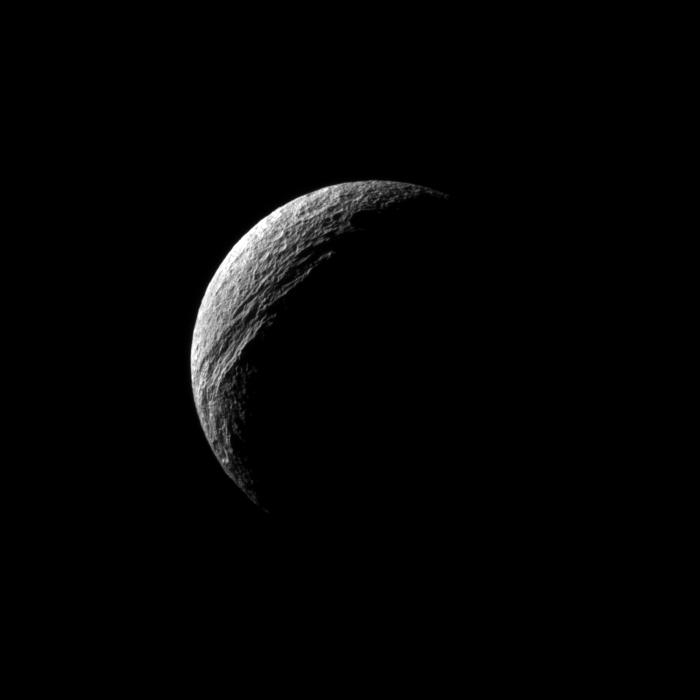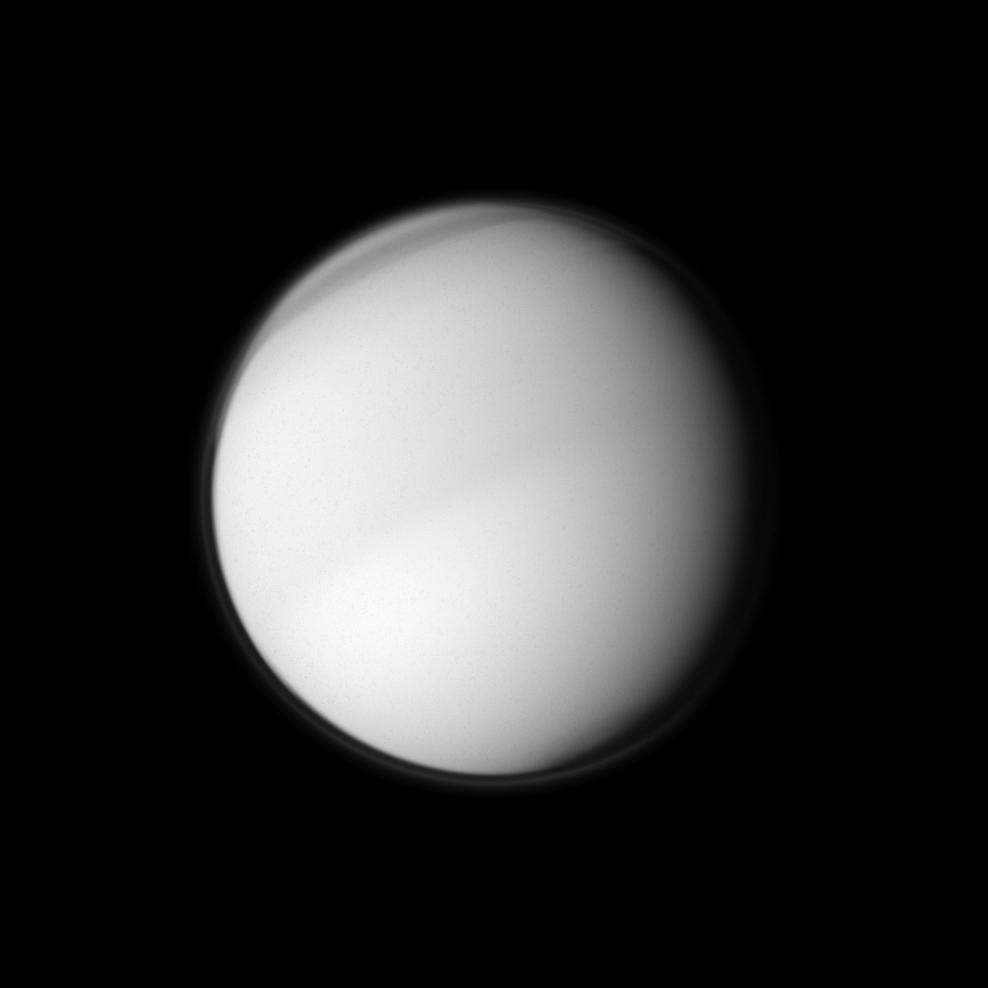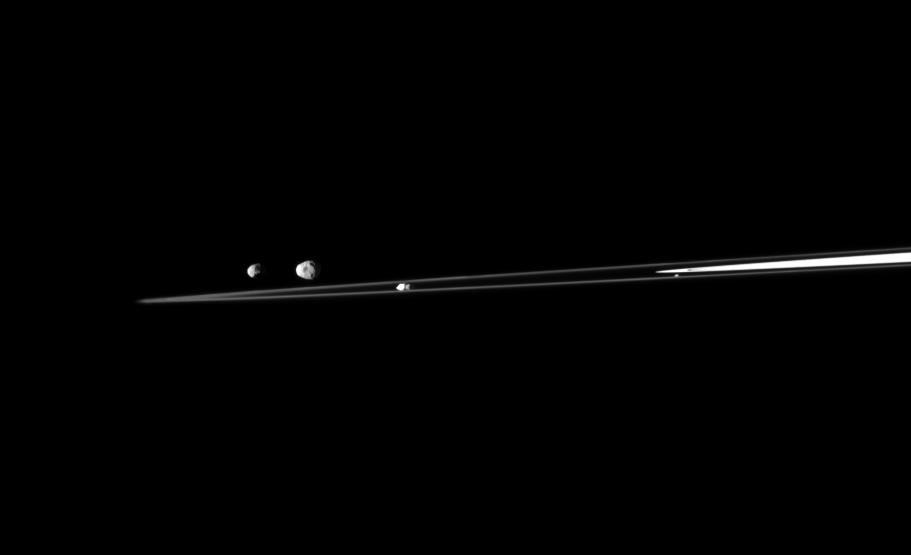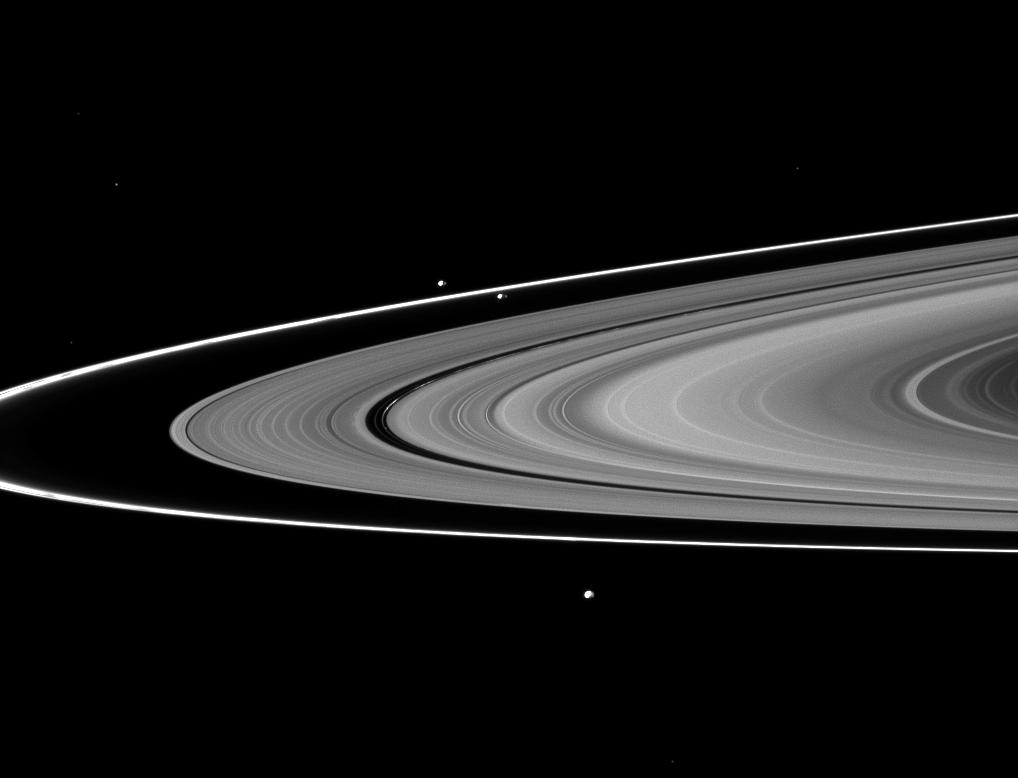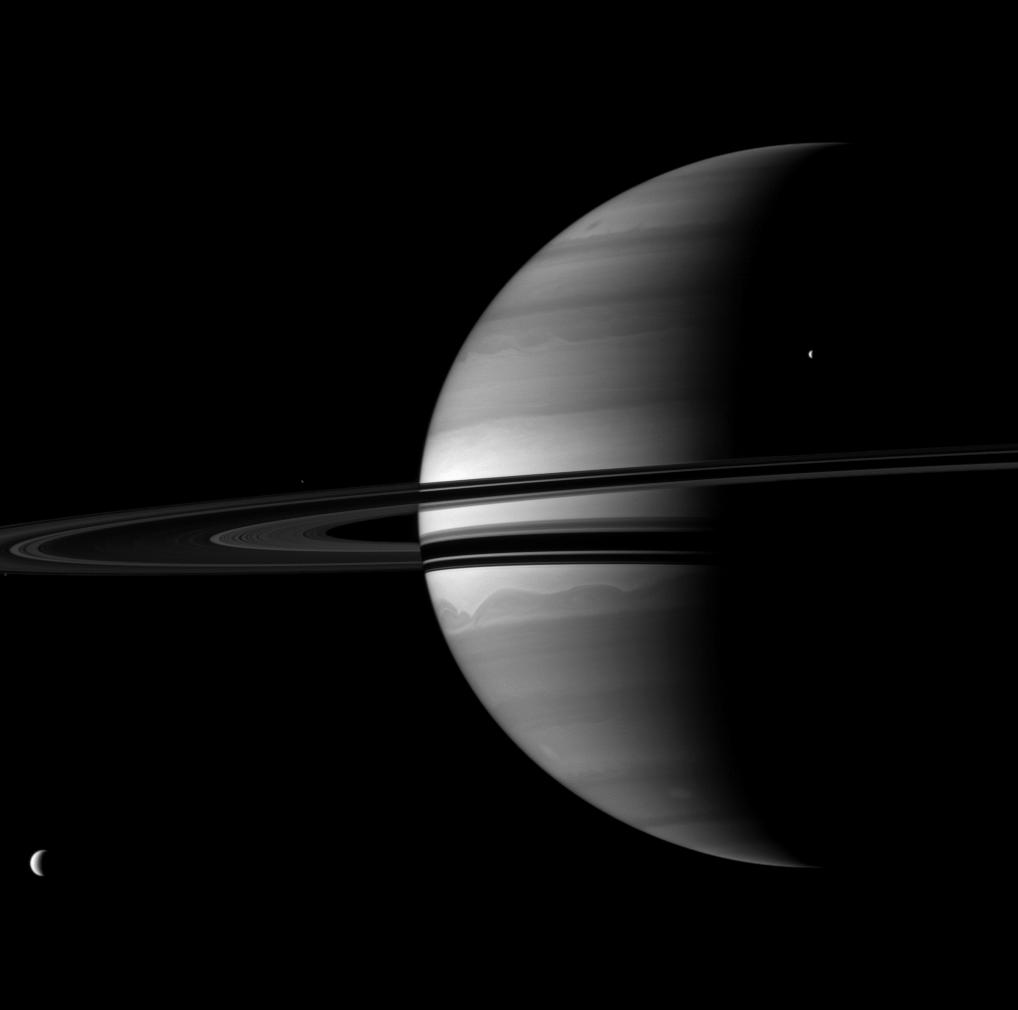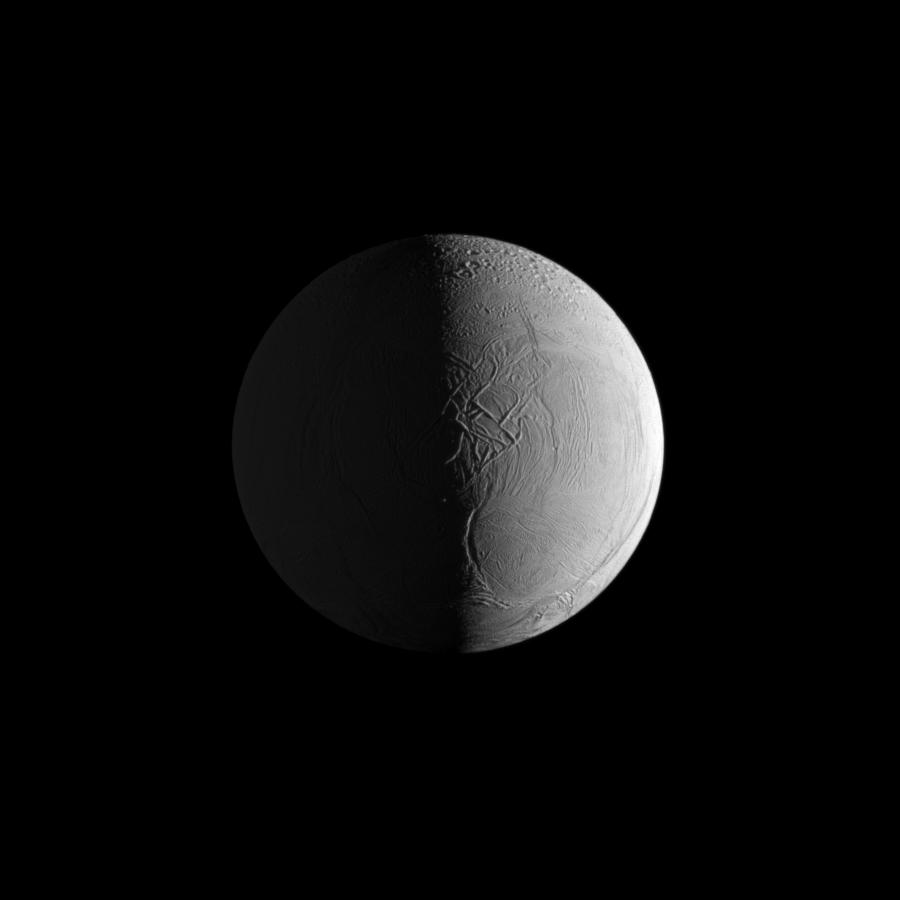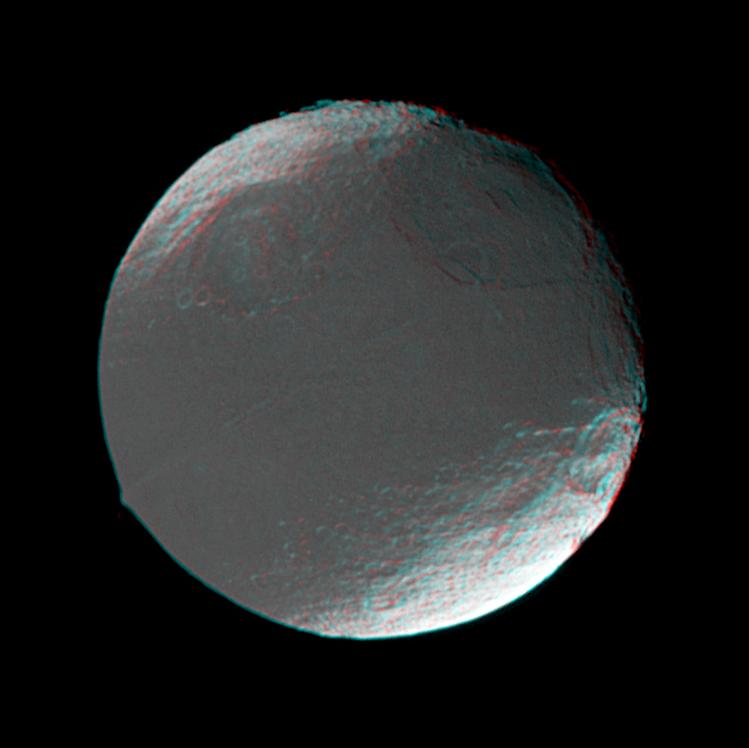Page 3 of 5
Re: Moons of our Solar System
Posted: Wed Jul 14, 2010 8:26 pm
by Ann
mexhunter wrote:Hi owlice:
My English is very bad, yet I dare to small contribution to the idea.


Although separated by more than 10 "arc, in fact the same area deformed by a unknown mass, which lies between our satellite and us. A mass with enough force to atrer and deflect the light from the headlights of research vessels. As effect similar to the twin quasar.
A true cosmic illusion!!!.
Grettings
Cesar
And who'd'a thunk that the Cheshire Cat effect is really caused by the gravitational bending of reflected light from the Moon by a quasar located between the Earth and the Moon?


The kind of things that are located between the Earth and the Moon, eh? And hey, am I the only one who thinks that the smaller galaxy in this picture appears to be smiling? It's a Galactic Cat, take my word for it!

Ann
Re: Moons of our Solar System
Posted: Thu Jul 15, 2010 12:22 am
by mexhunter
Hi Ann:
About six years ago when I started practicing astrophotography, I took a horrible picture of the moon, due to bad focus impressive, it was my second session in front of a telescope and a camera.

But it could be two end of the story:
That of a "black hole", which would mean the credit of having taken a picture of this phenomenon, which is not an easy thing

. Or to now be sure that the Homer Simpson donut orbiting the planet since long time ago.

Grettings
Cesar
Re: Moons of our Solar System
Posted: Thu Jul 15, 2010 1:32 am
by rstevenson
Yep, looks like a donut to me. And believe me, I know donuts. I even know doughnuts.
Rob
Re: Moons of our Solar System
Posted: Sat Jul 17, 2010 3:48 pm
by Ann
Cesar, I love that image of a "black hole" in the Moon (or Homer Simpson's donut in orbit around the Earth)!!!!

Ann
Re: Moons of our Solar System
Posted: Sun Jul 18, 2010 4:48 pm
by mexhunter
Hi Rob, Ann:
Thank you very much!
6 years ago I was ashamed of it.
Now it makes me laugh a lot.
Grettings.
Cesar
Re: Moons of our Solar System
Posted: Thu Jul 22, 2010 9:45 pm
by mexhunter
Hello everyone:
Reviewing old files, I found this photo of the new moon of about 26 hours.
Neomenia, or, the time of the new moon, the beginning of the month in the lunar calendar.
I took the March 8, 2008.
Greetings
Cesar
Re: Moons of our Solar System
Posted: Sun Aug 01, 2010 3:19 pm
by owlice
Chasma Crescent
http://photojournal.jpl.nasa.gov/catalog/PIA12686
Credit: NASA/JPL/Space Science Institute
Sunlight illuminates the deep cut of Ithaca Chasma on Saturn's moon Tethys.
Ithaca Chasma runs roughly north-south for more than 1,000 kilometers (620 miles) on Tethys.
Lit terrain seen here is on the Saturn-facing side of Tethys (1,062 kilometers, or 660 miles across). North on Tethys is up and rotated 18 degrees to the right.
The image was taken in visible light with the Cassini spacecraft narrow-angle camera on June 2, 2010. The view was obtained at a distance of approximately 477,000 kilometers (296,000 miles) from Tethys and at a sun-Tethys-spacecraft, or phase, angle of 127 degrees. Image scale is 3 kilometers (2 miles) per pixel.
PS: Moons of Saturn: Janus and Iapetus
Posted: Mon Aug 02, 2010 11:55 pm
by bystander
Goodies from the latest Cassini data release
Planetary Society Blog | 02 Aug 2010
- Janus in natural color
Cassini took the images for this unusually close view of Janus on July 26, 2009. The image is composed of four pictures taken through red, green, blue, and clear filters and is enlarged by a factor of two.
Credit: NASA/JPL/SSI/Emily Lakdawalla
- Crescent Iapetus
Cassini took several series of photos of Iapetus from a distance in September, 2009. This one is composed of four pictures taken through infrared, green, ultraviolet, and clear filters and is enlarged by a factor of two.
Credit: NASA/JPL/SSI/Emily Lakdawalla
four little moons in motion
Posted: Fri Aug 06, 2010 3:22 pm
by bystander
Cassini catches four little moons in motion
Planetary Society Blog | 06 Aug 2010
Atlas, Prometheus, Epimetheus,
and Janus dancing near the rings
This animation is composed of 22 frames captured through Cassini's narrow-angle camera on July 27, 2010 at around 2:15 UTC. Four of the ring-moons cross through the field of view during the animation.
Credit: NASA/JPL/SSI Animation: Emily Lakdawalla
Code: Select all
Atlas 46 × 38 × 19 km diameter 137,670 km from Saturn 0.602 days
Prometheus 119 × 87 × 61 km diameter 139,380 km from Saturn 0.613 days
Epimetheus 135 × 108 × 105 km diameter 151,410 km from Saturn 0.694 days
Janus 193 × 173 × 137 km diameter 151,460 km from Saturn 0.695 days
Moons of our Solar System: Titan
Posted: Tue Aug 10, 2010 4:07 pm
by bystander
Titan: Atmospheric Aspects
NASA JPL | Cassini Equinox Mission | 10 Aug 2010
Titan: Atmospheric Aspects
The Cassini spacecraft examines the characteristics of Titan's atmosphere as it peers at Saturn's largest moon using a filter sensitive to visible violet light.
This image shows atmospheric banding around Titan's north pole and reveals hints of the moon's seasonal hemispheric dichotomy near the equator. To learn more about the northern bands, see
Bands of Titan and
Northern Bands. See
Two Halves of Titan to learn more about the seasonal dichotomy between the northern and southern hemispheres.
This view looks toward the anti-Saturn side of Titan (5,150 kilometers, or 3,200 miles across). North on Titan is up and rotated 23 degrees to the left.
The image was taken in visible violet light with the Cassini spacecraft wide-angle camera on June 21, 2010. The view was obtained at a distance of approximately 170,000 kilometers (106,000 miles) from Titan and at a sun-Titan-spacecraft, or phase, angle of 33 degrees. Image scale is 10 kilometers (6 miles) per pixel.
Credit: NASA/JPL/SSI
Moons of our Solar System
Posted: Wed Sep 15, 2010 6:23 pm
by bystander
Moon Quartet
NASA JPL | Cassini Equinox Mission | 07 Sept 2010
A quartet of Saturn's moons are shown with a sliver of the rings in this Cassini spacecraft view.
From left to right in this image are Epimetheus (113 kilometers, or 70 miles across), Janus (179 kilometers, or 111 miles across), Prometheus (86 kilometers, or 53 miles across) and Atlas (30 kilometers, or 19 miles across).
This view looks toward the northern, sunlit side of the rings from just above the ringplane.
The image was taken in visible light with the Cassini spacecraft narrow-angle camera on July 27, 2010. The view was obtained at a distance of approximately 1.3 million kilometers (808,000 miles) from Janus, Prometheus and Atlas. The view was obtained at a distance of approximately 1.2 million kilometers (746,000 miles) from Epimetheus. Image scale is 8 kilometers (5 miles) per pixel on Janus, Prometheus and Atlas. Image scale is 7 kilometers (4 miles) per pixel on Epimetheus.
Credit: NASA/JPL/SSI
Re: Moons of our Solar System
Posted: Wed Sep 15, 2010 6:26 pm
by owlice
WOW!
I mean... thanks for posting that!!!!
Moons of our Solar System
Posted: Wed Sep 15, 2010 6:27 pm
by bystander
Trio of Small Moons
NASA JPL | Cassini Equinox Mission | 09 Sept 2010
The F ring's shepherds, Prometheus and Pandora, join Epimetheus in this image of three of Saturn's moons and the rings.
Prometheus (86 kilometers, or 53 miles across) can be seen orbiting inside the thin F ring near the middle of the image. Pandora (81 kilometers, or 50 miles across) orbits outside the F ring to the left of Prometheus. Epimetheus (113 kilometers, or 70 miles across) orbits beyond the F ring near the bottom of the image.
See
Close to the Shepherd Moons to learn more about how Prometheus and Pandora "shepherd" the F ring.
This view looks toward the southern, unilluminated side of the rings from about 2 degrees below the ringplane. Several background stars are visible.
The image was taken in visible light with the Cassini spacecraft narrow-angle camera on Aug. 2, 2010. The view was acquired at a distance of approximately 2.5 million kilometers (1.6 million miles) from Prometheus and Pandora. The view was acquired at a distance of approximately 2.6 million kilometers (1.6 million miles) from Epimetheus. Image scale is 15 kilometers (9 miles) per pixel on Prometheus and Pandora. Image scale is 16 kilometers (10 miles) per pixel on Epimetheus.
Credit: NASA/JPL/SSI
Re: Moons of our Solar System
Posted: Wed Sep 15, 2010 6:30 pm
by owlice
You're trying to kill me, aren't you? Such fabulous pictures!!
Moons of our Solar System
Posted: Wed Sep 15, 2010 6:30 pm
by bystander
Quartet and Crescent
NASA JPL | Cassini Equinox Mission | 10 Sept 2010
Four of Saturn's moons join the planet for a well balanced portrait.
Saturn's largest moon, Titan (5,150 kilometers, or 3,200 miles across), is in the lower left. Tethys (1,062 kilometers, or 660 miles across) is in the upper right. Although those moons appear to be above and below the rings from this vantage point, the moons actually orbit nearly within the ringplane.
The smaller moons Pandora and Epimetheus are barely visible here. Pandora (81 kilometers, or 50 miles across) appears as a tiny speck on the extreme left, near the rings. Epimetheus (113 kilometers, or 70 miles across) can be detected above the rings near the middle left of the image. To enhance visibility, Pandora and Epimetheus have been brightened by a factor of two relative to the planet, rings, Titan and Tethys.
This view looks toward the southern, unilluminated side of the rings from about 3 degrees below the ringplane.
The image was taken with the Cassini spacecraft wide-angle camera on July 17, 2010 using a spectral filter sensitive to wavelengths of near-infrared light centered at 728 nanometers. The view was obtained at a distance of approximately 2.5 million kilometers (1.6 million miles) from Saturn and at a Sun-Saturn-spacecraft, or phase, angle of 104 degrees. Image scale is 147 kilometers (91 miles) per pixel.
Credit: NASA/JPL/SSI
Moons of our Solar System
Posted: Wed Sep 15, 2010 6:35 pm
by bystander
Elephant Skin Enceladus
NASA JPL | Cassini Equinox Mission | 13 Sept 2010
Two sources of light reveal the dramatic surface of Saturn's moon Enceladus in this Cassini image in which geologic features give the appearance of the leathery skin of an elephant.
Geologically young terrain in the southern and middle latitudes gives way to older, cratered terrain in the northern latitudes of the moon. See
New to Old on Enceladus to learn more.
Sunlight illuminates the right of the image, and light reflected off Saturn dimly illuminates the left. This view looks toward the leading hemisphere of Enceladus (504 kilometers, or 313 miles across). North on Enceladus is up.
The image was taken in visible light with the Cassini spacecraft narrow-angle camera on April 7, 2010. The view was obtained at a distance of approximately 198,000 kilometers (123,000 miles) from Enceladus and at a sun-Enceladus-spacecraft, or phase, angle of 92 degrees. Image scale is 1 kilometer (3,300 feet) per pixel.
Credit: NASA/JPL/SSI
Re: Moons of our Solar System
Posted: Wed Sep 15, 2010 6:39 pm
by owlice
hummina hummina hummina
:clunk:
Moons of our Solar System: Iapetus
Posted: Wed Sep 15, 2010 7:29 pm
by BMAONE23
a good 3D image
and it's backside
Full-res
Re: Moons of our Solar System
Posted: Wed Sep 15, 2010 8:45 pm
by Beyond
owlice wrote:hummina hummina hummina
:clunk:

Re: Moons of our Solar System
Posted: Thu Sep 16, 2010 12:39 am
by owlice
beyond, you're clearly too young to know the reference for
hummina hummina hummina. Bet neufer gets it, though; he's even older than I am.

BMAONE23, isn't Iapetus cooool? Great pictures; thanks for posting them!
bystander, Enceladus ("test drive one today!") is also cool and what a great pic! But those Saturn shots with rings and little moons... be careful with them, please, lest you overwhelm a certain Owl!!
Re: Moons of our Solar System
Posted: Thu Sep 16, 2010 1:10 am
by bystander
owlice wrote:hummina hummina hummina
beyond, you're clearly too young to know the reference for
hummina hummina hummina.
Bet neufer gets it, though; he's even older than I am.

Probably
not what you had in mind ...
http://www.urbandictionary.com/define.p ... %20hummina
http://www.urbandictionary.com/define.p ... a%20Humina
Re: Moons of our Solar System
Posted: Thu Sep 16, 2010 7:01 am
by owlice
bystander, I don't even have to click on the links to know where you are going, and you, too, are old enough to know better and know the reference!!!

beyond, pay no attention to the links behind the screen; google "hummina Gleason" instead!
Re: Moons of our Solar System
Posted: Thu Sep 16, 2010 6:11 pm
by bystander
owlice wrote:bystander, Enceladus ("test drive one today!") is also cool and what a great pic! But those Saturn shots with rings and little moons... be careful with them, please, lest you overwhelm a certain Owl!!
Let me entice you with this one:
Celestial Wonderland
NASA IOTD | 16 Sept 2010
Celestial Wonderland
This high forward oblique view of Rima Ariadaeus on the moon was photographed by the Apollo 10 crew in May 1969. Center point coordinates are located at 17 degrees, 5 minutes east longitude and 5 degrees, 0 minutes north latitude. The Apollo 10 crew aimed a hand-held 70mm camera at the surface from lunar orbit for a series of images of this area.
Image Credit: NASA
Re: Moons of our Solar System
Posted: Thu Sep 16, 2010 6:53 pm
by owlice
bystander, that's fabulous; thank you!!
Re: Moons of our Solar System
Posted: Thu Sep 16, 2010 6:58 pm
by Beyond
owlice wrote:bystander, I don't even have to click on the links to know where you are going, and you, too, are old enough to know better and know the reference!!!

beyond, pay no attention to the links behind the screen; google "hummina Gleason" instead!
Owlice, must be one of those different parts of the country thing. Hubba-hubba-hubba was when a guy saw a really good looking girl, usually clothing challenged. But your Hummina, hummina, hummina, leaves me in the dark even when i find out Hummina Gleason is a champion Mastiff.
So is hummina,hummina,hummina a referrence to everything going to the dogs

And what's with the ::clunk:: Hanging up the phone?





